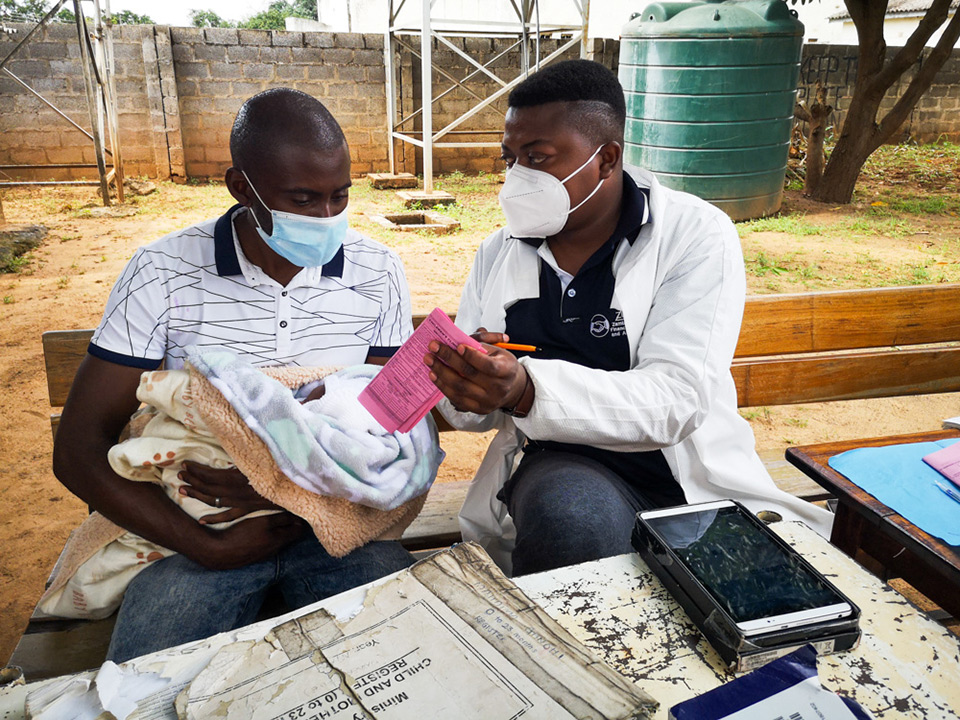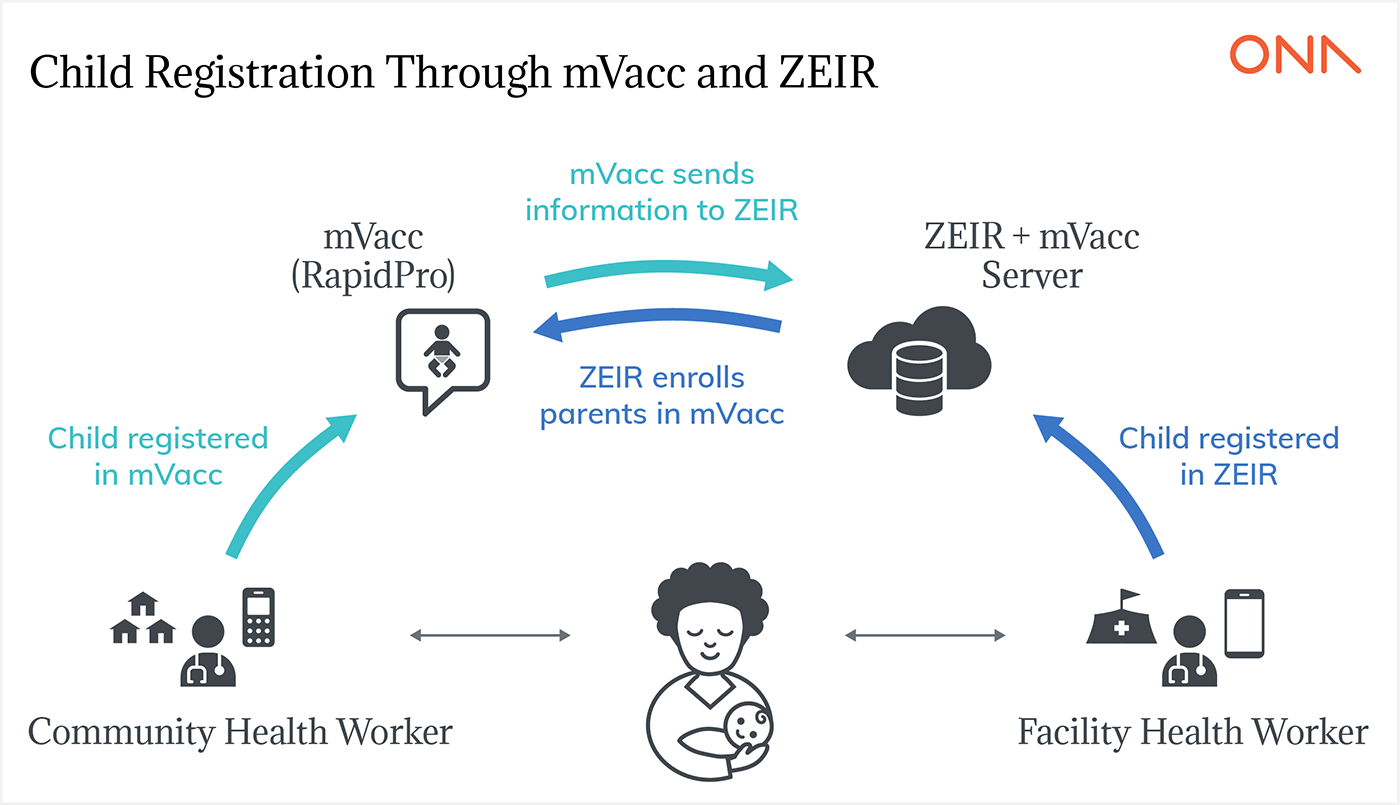Closing immunization gaps by integrating OpenSRP and Rapidpro

In its effort to reduce child mortality, Zambia has wholeheartedly embraced digital health. However, in the race to close immunization gaps, the country adopted two health systems that work independently: Rapid Pro at the community level and OpenSRP at health facilities. This disconnect created conditions for data fragmentation, inaccurate reporting, and duplicated efforts.
To fix these problems, Zambia’s Ministry of Health and Path asked Ona to build a solution unifying the two health systems. Full transparency: Ona is (partially) responsible for the situation. In 2017, we collaborated with the MoH and Path to build Zambia’s facility-level OpenSRP platform, Zambia Electronic Immunization Registry, or ZEIR (you can read about it here, here, or here — or watch a video from BID). ZEIR is an Android-based case management platform for children under age five supporting 2,411 health workers in 901 health facilities in the Southern and Western provinces.
The community-level RapidPro system, mVacc (“mobile vaccination”), is an SMS-based beneficiary messaging system helping 8,500+ community health workers send messages to families reminding them to bring children to immunization appointments.
Running these systems in the same area means that potentially the same people are recorded and their immunization records tracked in separate systems with no way of knowing if records match between platforms. It’s quite a messy situation.

To fix these problems and streamline health record processes for health workers, Ona and a consortium of partners integrated mVacc and ZEIR. We made five updates in this integration:
- Registering a child in mVacc also registers a child in ZEIR. This provides continuity of care when such a child is presented at the health facility.
- Immunization and growth monitoring events recorded on mVacc are updated on ZEIR.
- Registering a child on ZEIR enrolls the child into mVacc, which immediately starts SMS reminders for the child’s upcoming vaccines.
- Immunization and growth monitoring events recorded on ZEIR are updated on mVacc.
- Along with the above updates that ensures complete and harmonized records, data from ZEIR and mVacc are stored into a common database and visualized on an integrated dashboard.
The ZEIR and mVacc integration is proving to be a successful demonstration for future integrations of health systems in Zambia and other countries struggling with multiple health information platforms. So far, there are 196,163 children under 5 registered with 1,408,578 vaccines recorded. Since this project, an integration of ZEIR to DHIS2 has also been completed.
Going forward, one of impacts of integrating these health systems is improving the continuum of health care for Zambian children. The integration effectively combines the health reach by ensuring that clients encountered in the community have records at the facility level and clients encountered at the facility are enrolled in the appropriate SMS messaging services. Both systems will know the children who are missing or due for vaccinations.
The second impact is better health policy decision making. Previously, each system collected its own set of patient records and there were cases of double registration of clients. As a result, the counts provided on immunization coverage were likely erroneous. By eliminating double record keeping, we gain a wholesome picture of a community’s immunization coverage. In addition, Child data from the community and facility is now integrated into a single system with analysis and visualization shown on one dashboard. This makes it easy for decision makers to pinpoint areas of most need and target immunization in those areas. For example, a decision maker is able to compare the dropout rate for different vaccines across different locations to help make immunization campaign decisions.
With years of experience on similar projects, we understand the importance of interoperability and data plumbing needed to keep digital systems relevant and useful. To support future projects, we went further while building this project to ensure these types of integrations are now configurable and rewriting custom code is no longer necessary. If you have any questions or have a similar problem to Zambia’s, don’t hesitate to contact us.

